The WRMarketplace is created exclusively for AALU members by experts at Greenberg Traurig and the AALU staff, led by Jonathan M. Forster, Steven B. Lapidus, Martin Kalb, Richard A. Sirus, and Rebecca Manicone. WRMarketplace #17-26 was written by Greenberg Traurig Associate Michelle C. Kauppila.
The AALU WRNewswire and WRMarketplace are published by the Association for Advanced Life Underwriting® as part of the Essential Wisdom Series, the trusted source of actionable technical and marketplace knowledge for AALU members—the nation’s most advanced life insurance professionals.
Thursday June 29, 2017 WRM#17-26
TOPIC: Made a Mistake, No Problem: IRS Updates Correction Programs for Qualified Plans.
MARKET TREND: Since errors in the administration of tax-qualified plans are not uncommon, the IRS has long made correction programs available to plan sponsors, as offered through its Employee Plans Compliance Resolution System (“EPCRS”). The EPCRS is set forth in an IRS revenue procedure and is updated from time to time.
SYNOPSIS: Effective as of the beginning of this year, Revenue Procedure 2016-51 updated the EPCRS correction programs and procedures to reflect changes made to the program since the EPCRS was last restated in 2013. The most significant changes relate to the scaling back of the IRS’s determination letter program for individually designed plans and a change in the manner in which sanctions are calculated by the IRS when it discovers uncorrected errors during a plan audit.
TAKE AWAYS: Advisors should proactively encourage their employer-clients to review the administration of their qualified plans to determine if the plans are being administered properly and if any errors have occurred. Periodically auditing the client’s plan may prove an invaluable service, especially since the IRS offers many corrective opportunities.
MAJOR REFERENCES: Revenue Procedures 2016-51, 2015-28, 2015-27, and 2013-12.
Effective as of the beginning of this year, the IRS updated its correction programs for tax-qualified plans, known as the Employee Plans Compliance Resolution System (EPCRS), to take into account changes that have occurred since EPCRS was last updated in 2013 and to incorporate new modifications.
WHAT IS EPCRS?
Correction Programs for Qualification Failures. EPCRS is a system of correction programs allowing tax-qualified plans1with errors that can cause plan disqualifications (“Qualification Failures”) to correct these errors and avoid disqualification. There are four types of Qualification Failures:
- Plan Document Failures (a plan provision or the absence of a plan provision that, on its face, violates the qualification requirements),
- Operational Failures (a failure to follow the terms of a plan),
- Demographic Failures (a failure to satisfy the nondiscrimination or coverage rules of Internal Revenue Code (“Code”) §§401(a)(4), 401(a)(26), or 410(b)), and
- Employer Eligibility Failures (the adoption of a plan, with a cash or deferred arrangement under Code section 401(k), by an employer that is not eligible to establish a 401(k) plan).
A correction under EPCRS must be reasonable and appropriate for the Qualification Failure being corrected. EPCRS describes correction methods for a variety of Qualification Failures that are deemed to be reasonable and appropriate methods of correcting the described failures (i.e., “safe harbor” correction methods).
Types of Correction Programs. EPCRS consists of three programs:
- Self-Correction Program (“SCP”). SCP is available to plans to correct: (a) insignificant Operational Failures at any time generally and (b) significant Operational Failures if the failure is corrected completely or substantially completed by the end of a specified correction period (generally the last day of the second plan year in which the failure occurred). Eligibility generally requires a plan to have a favorable letter from the IRS. A plan sponsor does not have to pay any user fees or sanctions to the IRS to use SCP. If the plan sponsor wants confidence that the IRS will accept the plan corrections made under SCP, the sponsor should correct any failures by following the safe harbor correction methods described in EPCRS.
Example 1: A plan sponsor discovers that operational failures occurred in its 401(k) plan, such that several eligible participants were not given the opportunity to elect to make 401(k) deferral contributions. The plan also provides matching contributions on the 401(k) contributions. All these participants are non-highly compensated employees (“NHCE”). An EPCRS safe harbor correction method provides that the plan sponsor will contribute 50% of the missed deferral opportunity to the participants’ accounts as a qualified non-elective contribution (“QNEC”) and 100% of the matching contributions that would have been made on the missed deferral opportunity. The missed deferral opportunity is determined under the EPCRS safe harbor correction method by multiplying the participants’ compensation by the actual deferral percentage (“ADP”) for NHCEs for the plan year in which the participants were not given the opportunity to elect to make 401(k) deferral contributions. The ADP for NHCEs for the missed election year was 3.5%. The plan sponsor corrects this failure under SCP, will follow the EPCRS correction method, and will provide a QNEC to an affected participant equal to 50% of the missed deferral opportunity (i.e., the affected participant’s compensation multiplied by the ADP (3.5%)) and 100% of the matching contributions that would have been made on the missed deferrals.
- Voluntary Correction Program (“VCP”). VCP is available for plans tocorrect Qualification Failures that are identified by a plan sponsor in a VCP submission and requires the payment of an IRS user fee. A plan may not submit a VCP application if the plan is under examination by the IRS; conversely, the IRS generally will not begin a plan audit while it has a VCP submission pending. The plan sponsor must propose a correction and obtain IRS approval of the proposed correction under VCP. If the IRS approves of the proposed correction or if the plan sponsor and the IRS agree on a different correction, the IRS will issue a compliance statement to the plan. The compliance statement will generally provide that the IRS will not treat the failures described in the compliance statement as Qualification Failures. A plan sponsor receives assurance that the corrections made in accordance with the compliance statement will be considered proper correction of the failures identified in the VCP.
Example 2. Assume the same facts as Example 1, except the plan sponsor does not want to follow the EPCRS safe harbor correction method. The plan sponsor reviewed historical 401(k) deferral percentages for employees in the same job or work unit as the affected participants and determined that such employees have historically contributed 401(k) deferrals at a rate of 2% of compensation. The plan sponsor wants to correct the failure in a similar manner as the correction described in Example 1 but wants to calculate the missed deferral opportunity by multiplying the participant’s compensation by 2%. Under the plan sponsor’s proposed correction, it will contribute a QNEC of 50% of the missed deferral opportunity calculated as described in the previous sentence and 100% of the matching contributions that would have been made on the missed deferrals. The plan sponsor decides to submit an application under VCP and propose this alternative correction method for the missed deferral contributions, because the plan sponsor wants to make sure that the IRS would be agreeable with the alternative correction method.
- Audit Closing Agreement Program (“CAP”). Audit CAP is available if a Qualification Failure (that has not already been corrected under SCP or VCP) is identified by the IRS during an audit of the plan. Under Audit CAP, the plan sponsor may correct the failure and pay a sanction to avoid the plandisqualification.
WHAT WERE THE SIGNIFICANT CHANGES MADE TO EPCRS?
Changes Related to Determination Letters. In a favorable determination letter, the IRS confirms that a plan document meets the tax qualification requirements in form. The letter is necessary so that a plan sponsor can be sure that the plan, as designed and written, is a qualified plan. Since 2013, significant changes were made to the IRS determination letter program such that determination letter applications and restatements for individually designed plan documents are no longer required every five years. Instead, individually designed plan documents may apply for favorable determination letters only if (1) the plan has never received a favorable determination letter, (2) the plan is terminating, or (3) the IRS makes a special exception.
Because of the scaled down determination letter program, EPCRS was revised to (1) replace the requirement for individually designed plans to have a current favorable determination letter with a requirement that the plan be the subject of a favorable determination letter in order for the plan to use SCP to correct substantial operational failures, and (2) remove the provisions that required or permitted plans to submit a determination letter application along with a VCP submission.
Changes to Calculating Audit CAP Sanctions. If the IRS identifies qualification failures during an audit, the disqualification of the plan can be avoided if the plan sponsor corrects the failure, pays a sanction, satisfies any additional requirements (e.g., implements new plan procedures to avoid future failures), and enters into a closing agreement with the IRS.
The approach for calculating the sanctions imposed for qualification failures changed significantly under the revised EPCRS. Previously, the IRS calculated the sanction as a negotiated percentage of the “maximum payment amount,” which is the maximum amount of taxes that the IRS could collect if the plan was disqualified. The sanctions would not be excessive and would bear a reasonable relationship to the nature, extent, and severity of the failures, based on the factors similar to the factors listed under the new approach below (excluding the maximum payment amount).
Under the updated EPCRS, the determination of the sanction under Audit CAP is a negotiated amount that is determined based on the facts and circumstances, including the relevant factors described below. Sanctions will not be excessive and will bear a reasonable relationship to the nature, extent, and severity of the failures, based on the factors below, but will generally not be less than the VCP user fee applicable to the plan. The maximum payment amount is just one of many factors considered and not the basis upon which an Audit CAP sanction will be calculated.
For All Plans. The factors considered in determining Audit CAP sanctions under the updated EPCRS for all plans include (as appropriate):
- The steps taken by the plan sponsor to ensure that the plan had no failures;
- The steps taken by the plan sponsor to identify failures that may have occurred;
- The extent to which correction had progressed before the examination was initiated, including full correction;
- The number and type of employees affected by the failure;
- The number of non-highly compensated employees who would be adversely affected if the plan were not treated as qualified;
- Whether the failure is a failure to satisfy the requirements of Code §§401(a)(4), 401(a)(26), or 410(b);
- Whether the failure is solely an Employer Eligibility Failure;
- The period over which the failure occurred (e.g., the time that has elapsed since the end of the applicable remedial amendment period under Code §401(b) for a Plan Document Failure);
- The reason for the failure (for example, data errors such as errors in transcription of data, the transposition of numbers, or minor arithmetic errors); and
- The Maximum Payment Amount.
For Non-Amender Failures. Additional factors considered for Non-Amender Failures in Qualified Plans also include:
- Whether the plan is the subject of a favorable determination letter;
- The internal controls implemented by the plan sponsor to ensure the timely adoption of required amendments;
- The extent to which the plan sponsor had adopted a timely plan amendment which later is found not to satisfy the qualification requirements of the Code;
- The extent to which the plan sponsor had otherwise adopted applicable amendments identified on the Required Amendments List described in Section 9 of Revenue Procedure 2016-37 (which describes the new determination letter application program) and published annually in the Internal Revenue Bulletin; and
- The extent to which the plan sponsor had reasonably determined thata provision on the Required Amendments List was not applicable to the plan sponsor’s plan.
For Participant Loans. An additional factor taken into account with respect to participant loans that did not comply with the requirements of Code §72(p)(2) is the extent to which the failure is a result solely of action (or inaction) of the employer or its agents (or the extent to which the failure is a result of the employee’s or beneficiary’s actions or inaction).
If the IRS audit involves a plan with assets transferred from another plan, and the IRS determines that no new incidents of the failures that relate to the transferred assets occurred after the end of the second plan year that begins after the corporate merger, acquisition, or other similar employer transaction, the sanction under Audit CAP will not exceed the sanction that would apply if the transferred assets were maintained as a separate plan.
AND MORE…OTHER CHANGES TO EPCRS
Prior Revenue Procedures. The updated EPCRS incorporates the following revenue procedures issued by the IRS in 2015, which were amendments to the 2013 EPCRS:
- The correction of overpayments paid to plan participants and the permitted self- correction of certain recurring excess annual additions under Code §415(c) if the excess annual additions are distributed within 9-1/2 months after the end of the limitation year.
- A new safe harbor correction method for failures related to missed elective deferral contributions that are subject to automatic contribution features (including automatic enrollment and automatic escalation of contributions). The revenue procedures also provided two alternative safe harbor correction methods for employee elective deferral failures that are limited in duration and feature reduced corrective contributions to encourage the early correction of employee elective deferral failures.
Additional Changes. Other changes made to EPCRS include:
- Removal of the VCP fee schedule from the revenue procedure. The procedure now provides that the VCP user fees will be set forth in the revenue procedure published annually by the IRS that sets forth all IRS user fees.
- Removal of the model VCP forms from the revenue procedure. The procedure now directs applicants to use the current versions of the forms available on the IRS website.
- Elimination of the partial refund of VCP user fees for employers whomake anonymous VCP submissions if they are unable to reach an agreement with the IRS on the proposed corrections. Before, employers were entitled to a 50% refund of the user fees paid for anonymous VCP submissions if agreement was not reached with the IRS.
WHY IS THIS IMPORTANT?
Recent IRS changes to its correction programs attempt to make it easier forplan sponsors to use these programs to correct common plan failures, thereby incentivizing plan sponsors to actually make the corrections. The change in the method that the IRS uses to determine sanctions under Audit CAP can be viewed as another change that encourages plan sponsors to ensure that plan failures do not occur, to identify errors that may have occurred, and to self-correct under SCP or voluntarily correct under VCP any errors that have occurred before an IRS audit is initiated. Under the new method, the efforts made by a plan sponsor to ensure that failures do not occur, to monitor the plan administration to identify failures, and to correct failures that do occur, are among the factors that are considered in determining, and should reduce, the amount of Audit CAP sanctions.
TAKE AWAYS
Advisors should proactively encourage their employer-clients to review the administration of their qualified plans to determine if the plans are being administered properly and if any errors have occurred. Periodically auditing the client’s plan may prove an invaluable service, especially since the IRS offers many corrective opportunities.
DISCLAIMER
This information is intended solely for information and education and is not intended for use as legal or tax advice. Reference herein to any specific tax or other planning strategy, process, product or service does not constitute promotion, endorsement or recommendation by AALU. Persons should consult with their own legal or tax advisors for specific legal or tax advice.
NOTES
1 EPCRS also includes correction programs for 403(b) Plans.






